Picture this: You’re sitting in a job interview, and instead of reciting rehearsed answers, you hand the recruiter a URL. “This is my MBA journey,” you say. “Here’s how I think, lead, and solve problems.” That’s the power of blogging—and it’s why I decided to brand myself publicly during my MBA.
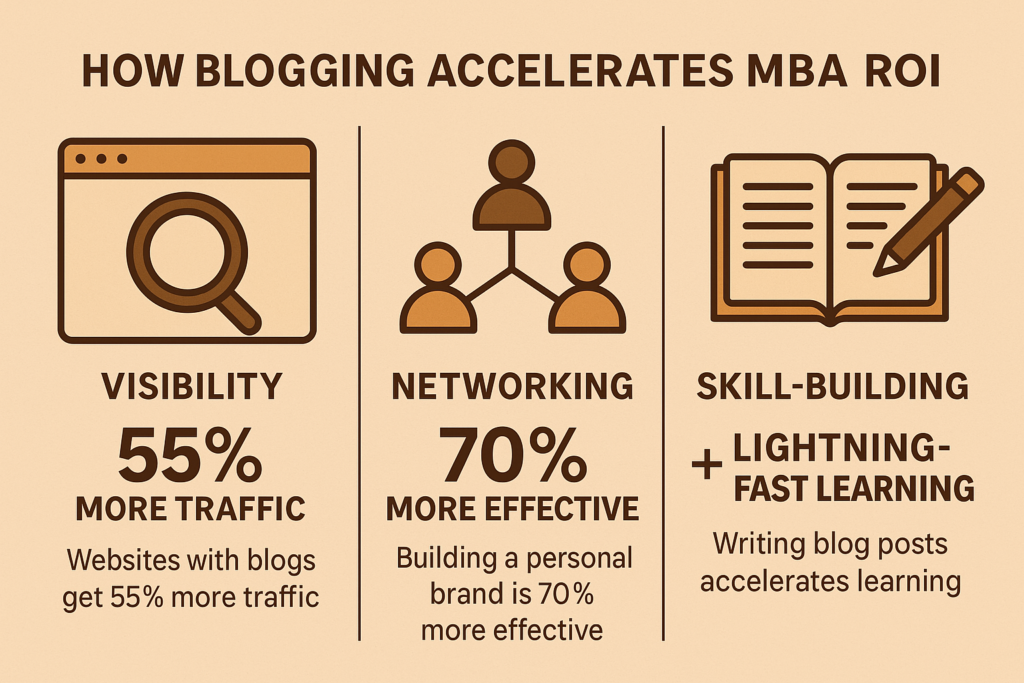
But this isn’t just about resumes. A 2023 LinkedIn report found that professionals who publish long-form content receive 6x more profile views than those who don’t. By sharing my MBA experiences—the wins, the meltdowns, and the “aha!” moments—I’ve connected with top brand mentors, landed consulting gigs, and even sparked friendships with readers across the globe. Let me show you how to turn your MBA into a compelling narrative.
Why Your MBA is the Perfect Time to Brand Yourself
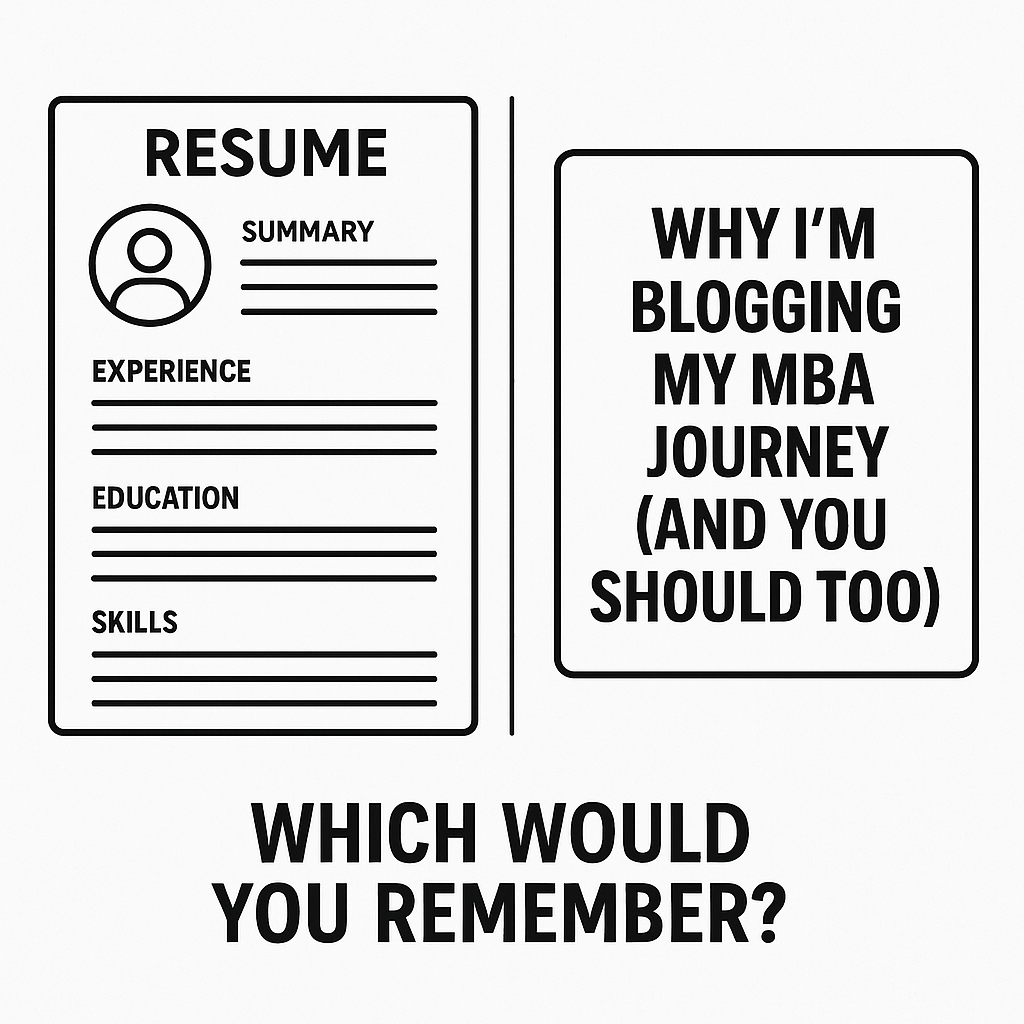
The Problem: MBAs Who Stay Invisible in a Crowded Market
MBA programs are crowded. Thousands graduate yearly with similar coursework and internships. Yet, according to a GMAC survey, 67% of employers say candidates lack differentiation. Blogging solves this: it’s your megaphone in a sea of whispers.
When I wrote about failing a negotiation simulation and the lessons it taught me about emotional intelligence, a Fortune 500 HR director commented: “This is the self-awareness we hire for.” My vulnerability became a credential.
How Blogging Turns Your MBA into a Brand-Building Tool
Your MBA is a goldmine of experiences—case studies, team projects, leadership challenges—but without documentation, they remain hidden. Blogging transforms these moments into a public portfolio of expertise, allowing you to showcase not just what you’ve learned, but how you think. For instance, dissecting a failed marketing strategy in a post demonstrates analytical rigor; reflecting on a cross-cultural team conflict highlights emotional intelligence. Over time, these stories coalesce into a cohesive narrative that positions you as a thought leader, not just a student. Platforms like LinkedIn reward consistent content creators with greater visibility, and recruiters often Google candidates to gauge their passion and depth. By optimizing posts for keywords like “MBA leadership strategies” or “sustainable business trends,” you ensure your insights reach the right eyes. Blogging isn’t just storytelling—it’s strategic brand-building, turning your MBA journey into a magnet for career opportunities.
Blogging ≠ Bragging (It’s Strategic Storytelling)
Think of your blog as a highlight reel with substance. For example:
- Case study breakdowns → Demonstrate analytical rigor.
- Leadership reflections → Showcase soft skills.
- Industry hot takes → Position yourself as a forward-thinker.
As Wharton professor Adam Grant argues, “Thought leadership isn’t about being right—it’s about being curious.” Blogging lets you model that curiosity.
Blogging vs. Networking: Which Builds Your Brand Faster?
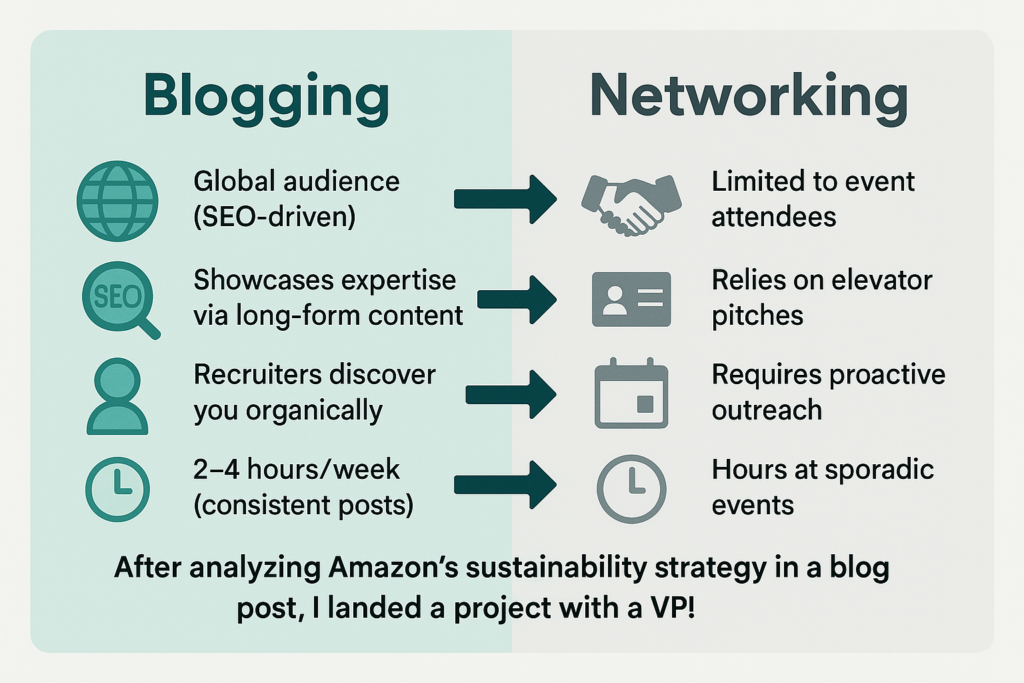
| Metric | Blogging | Traditional Networking |
|---|---|---|
| Reach | Global audience (SEO-driven) | Limited to event attendees |
| Depth of Impact | Showcases expertise via long-form content | Relies on elevator pitches |
| Career Opportunities | Recruiters discover you organically | Requires proactive outreach |
| Time Investment | 2-4 hours/week (consistent posts) | Hours at sporadic events |
After I analyzed Amazon’s sustainability strategy in a blog post, a VP at the company shared it internally. That one post led to a coffee chat—and later, a project collaboration.
Ways Blogging Helps You Brand Yourself During an MBA
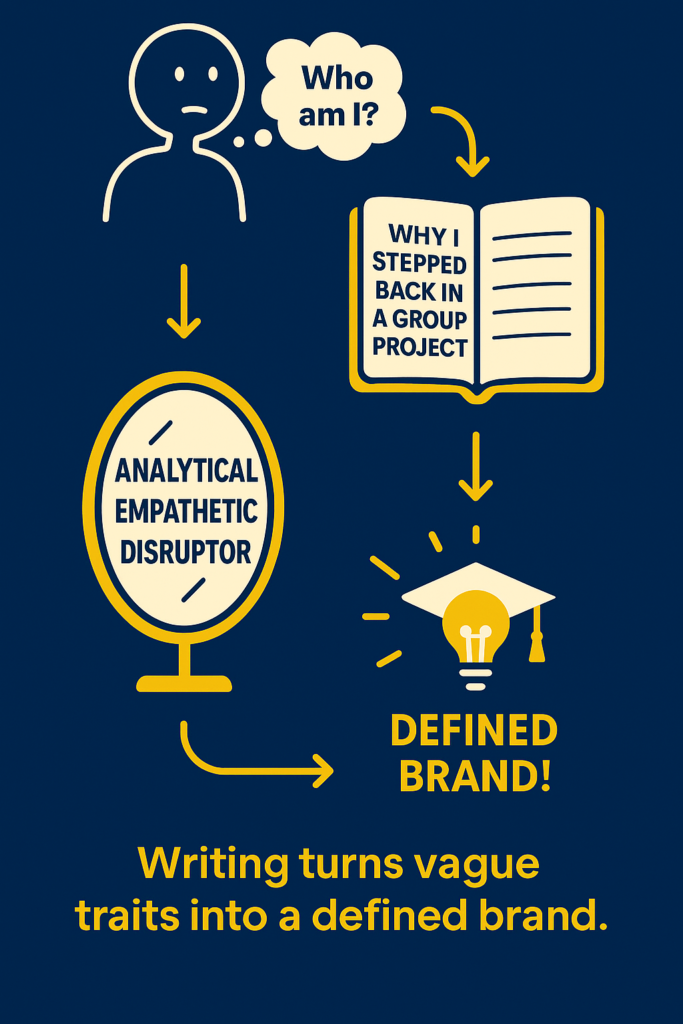
1. Clarify Your Brand Through Writing
Writing is more than a skill—it’s a mirror. When you blog about your MBA journey, you’re forced to articulate your values, goals, and perspectives. For example, reflecting on a leadership challenge like “Why I Stepped Back During a Group Project to Let Others Shine” forces you to define your leadership style. Over time, patterns emerge: Are you the analytical problem-solver? The empathetic collaborator? The industry disruptor? Each post sharpens your self-awareness, turning vague traits into a defined brand. Start with prompts like “What’s the one lesson I want my readers to remember?” to align your content with your core message.
2. Showcase Your Expertise (Not Just Your GPA)
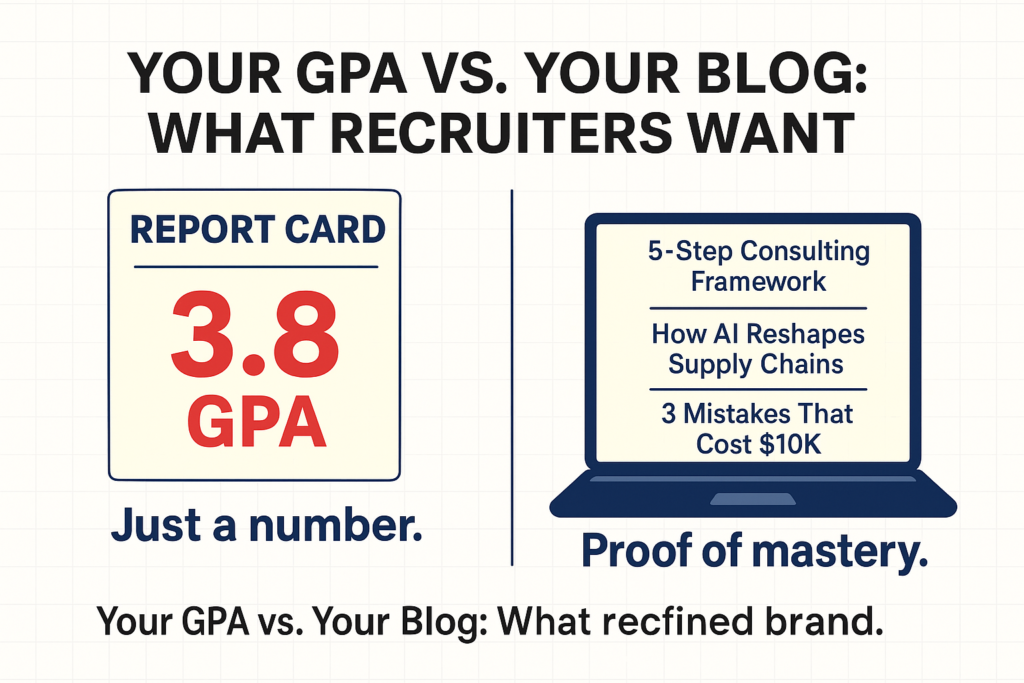
Your GPA is a number; your blog is proof. Instead of listing grades, demonstrate mastery through actionable insights:
- Break down a consulting case study into a 5-step framework.
- Analyze a trending industry shift (e.g., “How AI is Reshaping Supply Chains—and What MBAs Need to Know”).
- Share lessons from a failed pitch competition (“3 Mistakes That Cost Us $10K—and How to Avoid Them”).
This approach positions you as a practitioner, not just a student. Recruiters crave candidates who can apply knowledge—not just recite it.
3. Turn Feedback into Brand Growth
Feedback is fuel for your brand’s evolution. When a reader comments, “Your take on ESG investing misses X,” use it to refine your next post. For instance, after receiving critiques on my early posts about entrepreneurship, I interviewed founders and added their insights—boosting credibility. Engage critics with curiosity (“What’s your perspective?”) and publicly update flawed posts (“Revised: New Data on Blockchain in Healthcare”). This transparency builds trust and shows your brand is dynamic, not static.
How to Start Branding Yourself Through MBA Blogging
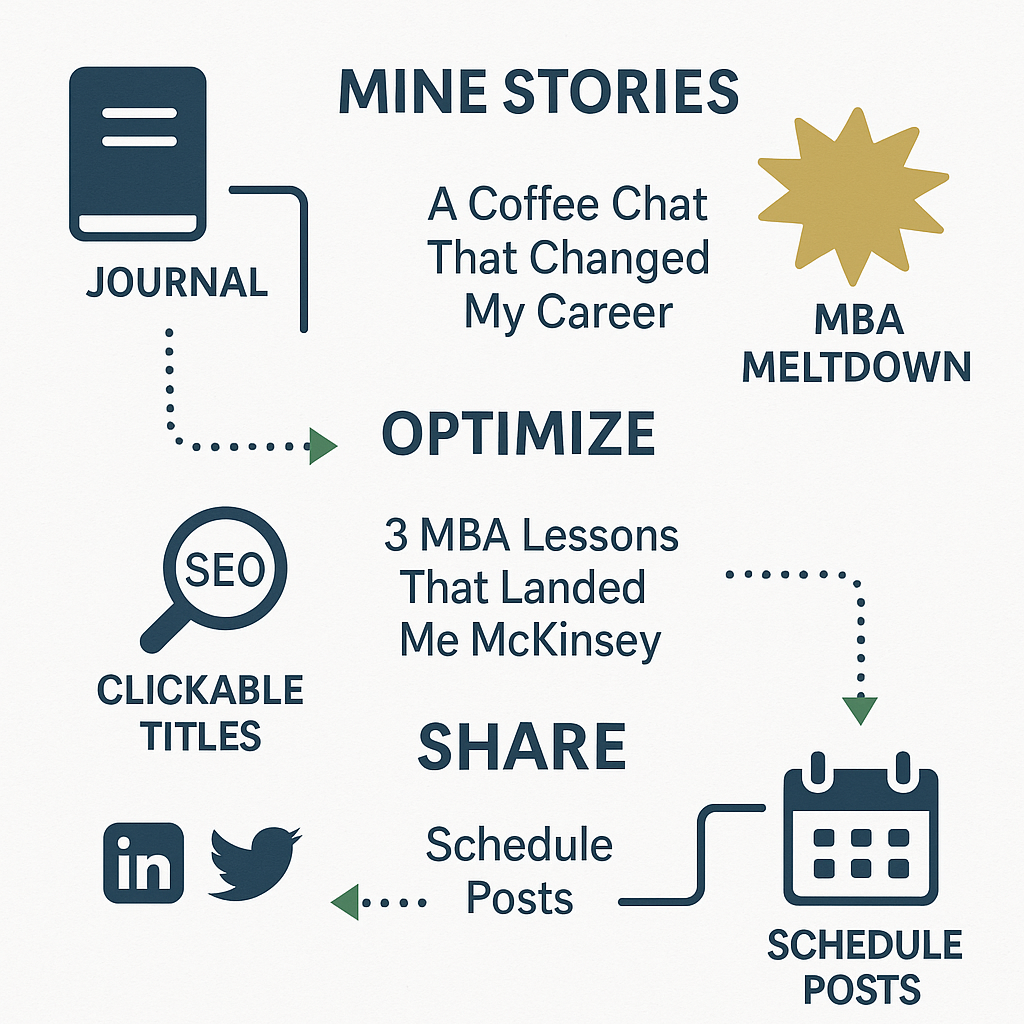
Step 1: Mine Your MBA Experience for Brand Stories
Your MBA journey is a treasure trove of unique stories waiting to be told. Start by documenting pivotal moments:
- Case Studies & Projects: Turn complex analyses into relatable insights. Example: “How My Team Saved a Failing Marketing Simulation—and What It Taught Me About Agility.”
- Challenges & Growth: Share struggles like balancing coursework and internships. “Failing My First Finance Exam Taught Me Resilience—Here’s How.”
- Networking Wins: Highlight mentorship or alumni interactions. “A Coffee Chat That Changed My Career Trajectory.”
Pro Tip: Keep a journal during your MBA to capture raw, authentic moments. These unfiltered notes become your storytelling goldmine.
Step 2: Optimize Content to Amplify Your Brand
Transform stories into discoverable, brand-aligned content:
- Keyword Research: Use tools like Google Keyword Planner to target terms like “MBA leadership strategies” or “career pivot tips.”
- SEO Basics: Craft clickable titles (“3 MBA Lessons That Landed Me a McKinsey Offer”) and meta descriptions under 155 characters.
- Visual Polish: Add infographics summarizing coursework or short videos explaining concepts. Tools like Canva make this easy.
- Consistency: Align tone with your brand voice (e.g., analytical vs. conversational).
Pro Tip: Repurpose class notes into “Quick MBA Takeaways” posts—busy professionals love snackable insights.
Step 3: Share Strategically to Build Your Brand
Distribution is where your brand gains traction:
- Platforms:
- LinkedIn: Ideal for career-focused posts. Tag companies or alumni to boost visibility.
- Medium: Perfect for long-form thought leadership. Join publications like “MBA Insights.”
- Twitter/X: Share bite-sized tips with hashtags like #MBA or #PersonalBranding.
- Timing: Post when your audience is active (e.g., weekday mornings for LinkedIn).
- Engage: Respond to comments, join discussions, and collaborate with peers.
Pro Tip: Use a scheduler like Buffer to maintain consistency without burnout.
Your MBA Journey: Start Branding Yourself Today
Title: “Why I’m Pursuing an MBA: [Your Unique Angle]”
Structure:
- Hook: A personal story (e.g., “Three years ago, I cried in a Starbucks bathroom after losing a client…”).
- Lesson: What that moment taught you.
- Vision: How the MBA fits into your larger goals.
Ready to Build Your Brand? Here’s Your First Step
Start today by writing a “Why I’m Here” post. Share a defining moment that led you to pursue an MBA—a career setback, a mentorship gap, or a passion for solving industry challenges. For example: “Three years ago, I watched my startup fail because I lacked financial literacy. Now, I’m using my MBA to bridge that gap—and here’s how.” This post frames your MBA as a solution to a real-world problem, instantly humanizing your brand. Publish it on LinkedIn or Medium, tag mentors or programs that inspire you, and use a hook like “This is why I’m risking $100K on an MBA.” Your first post isn’t about perfection—it’s about starting the conversation
Avoid These 3 Branding Mistakes as an MBA Blogger
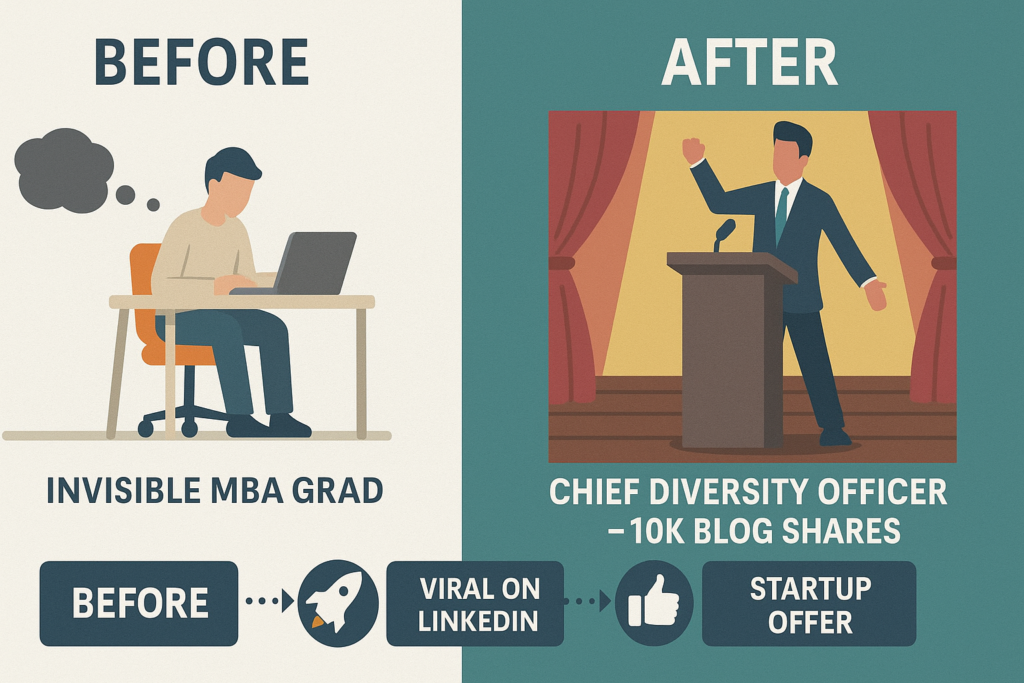
- Mistake 1: Prioritizing Polish Over Authenticity
Don’t hide struggles. A post titled “How I Bombed a Consulting Case Interview” attracts more engagement (and empathy) than a generic “How to Ace Cases.” Vulnerability builds trust. - Mistake 2: Ignoring SEO
Writing without keywords? You’re invisible. Use free tools like Google Keyword Planner to find terms like “MBA career pivot strategies” or “sustainable supply chain trends.” - Mistake 3: Posting Sporadically
Inconsistent blogging = inconsistent branding. Schedule 1-2 posts monthly. Repurpose class notes or project reflections into content—your audience cares about insights, not Pulitzer-level prose.
Conclusion: Your MBA is a Story—Start Telling It

Blogging isn’t vanity. It’s the modern toolkit for branding yourself as a leader before you have the title. My blog has become my career compass, clarifying what I care about and connecting me with those who care too.
Your Turn: Write your first post this week. Need accountability? Reply to this post with your URL—I’ll read every one and share my favorite.
CTA: Grab my free “MBA Blogging Starter Pack” and start your brand online
